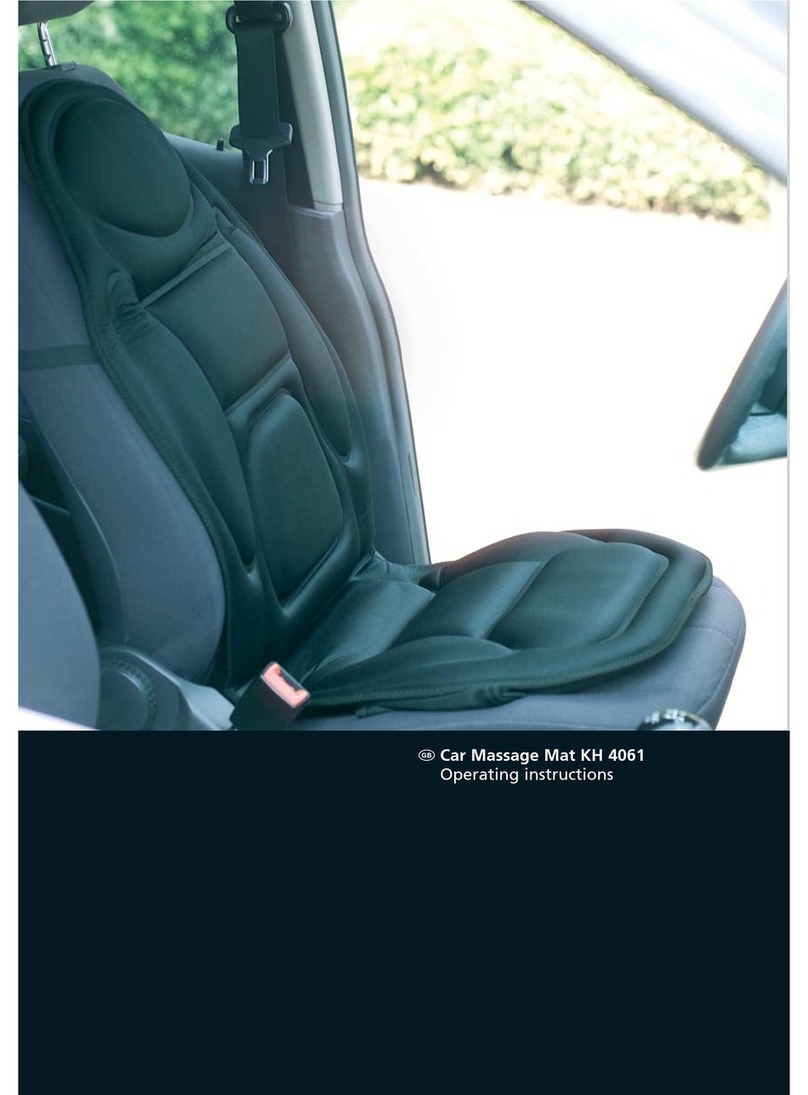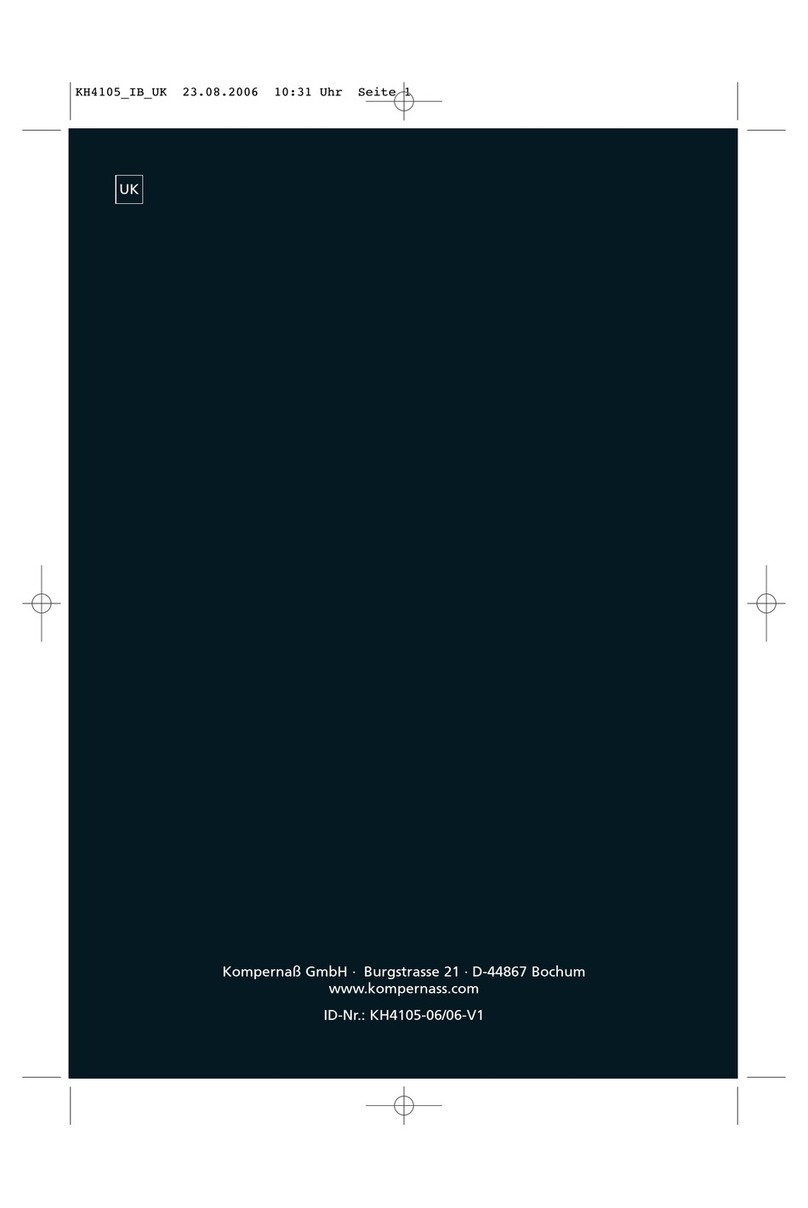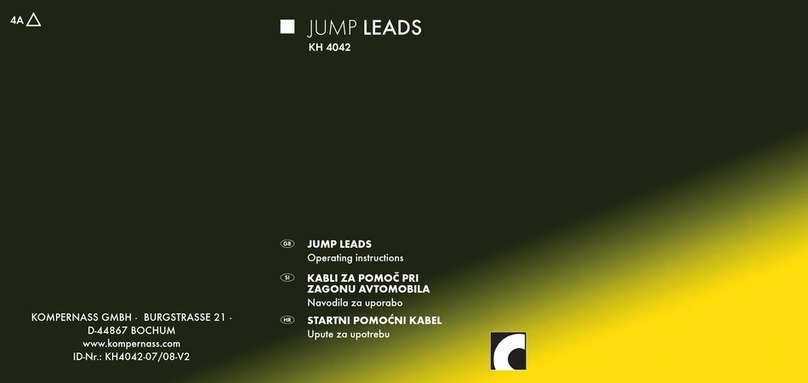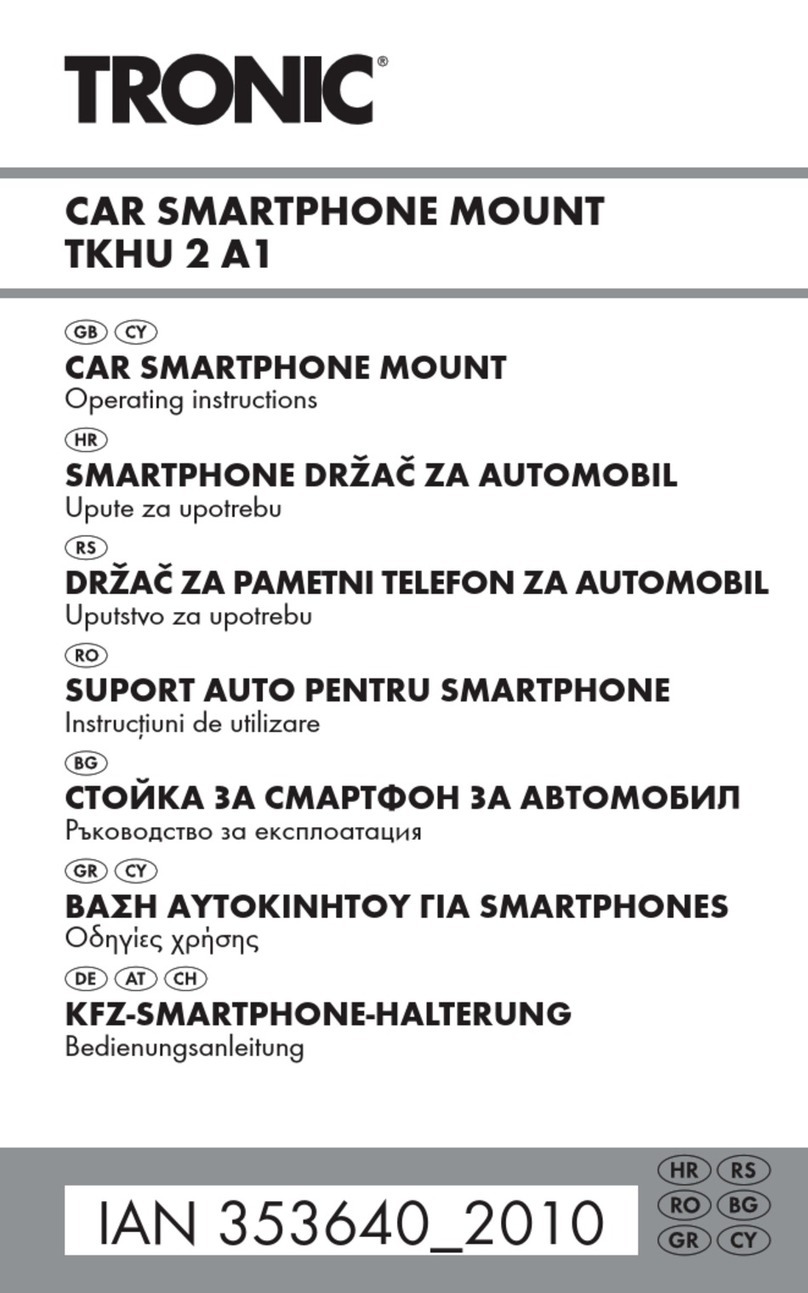- 3 -
Safety information
• Before starting the bridging procedure, be sure to check the details given
in the operating handbooks for BOTH vehicles.
• Check to ensure that the two batteries have the same rated voltage (e. g.
12 Volt). The capacity (details in Ah) of the supplier battery should not
be significantly smaller than that of the receiver battery.
• Ensure that the permitted cylinder capacity limits of the battery jumper
leads are not being exceeded by the vehicles.
• There may NOT be any bodywork contact existent or possible between
the two vehicles.
• The ignition on both vehicles MUST be switched off before the battery
jumper leads are connected. Additionally, the hand brake must be activated
and, for manual vehicles the gear lever must be in neutral, for automatic
vehicles the selector lever must be in the position P.
• During the starting procedure both batteries must remain properly
connected within their vehicles. An interruption could lead to the destruction
of the dynamo/alternator!
Warning: Risk of electric shock!
• Always follow the sequence described for attaching and detaching the
cables, and for starting the engines!
Risk of explosion!
Under no circumstances should you connect the black cable directly to the
minus pole of the receiver battery, should you do so there is the risk that
detonating gas may explode when making/breaking the connection!
Keep open lights, heat or electrical sparks well away from the batteries.
There is a risk of deflagration!































